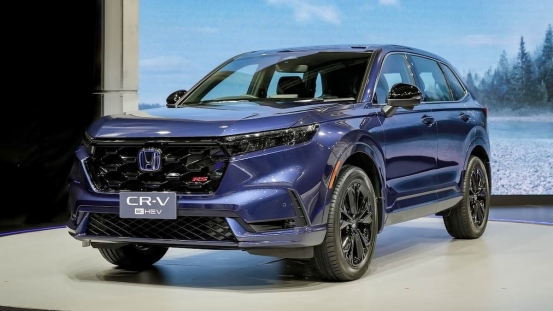The 2025 Honda CR-V blends practicality, comfort, and modern technology in a compact SUV, offering both gasoline and hybrid options for families, commuters, and a broad range of drivers.

Overview and Design
As a sixth-generation model introduced in 2023, the 2025 CR-V builds on its familiar design with refined updates for a modern, confident appearance. Its bold grille, sculpted body lines, and distinctive LED lighting reflect Honda’s current styling direction.
Inside, upgraded materials and an improved digital interface enhance the cabin experience. Drivers benefit from an intuitive infotainment system and ergonomic layout, while passengers enjoy spacious seating and a comfortable ride. Owner feedback highlights its reliability and user-friendliness, though handling favors comfort over sportiness.
Performance and Powertrain Options
For 2025, Honda offers two key powertrains. The standard 1.5-liter turbocharged four-cylinder delivers about 190 horsepower and 179 lb-ft of torque, paired with a responsive CVT. The hybrid variant combines a 2.0-liter engine with dual electric motors, producing approximately 204 horsepower. Most trims come with either front-wheel or all-wheel drive.
On-road performance is composed and confident, handling everyday driving needs well. The hybrid provides smooth acceleration, improved responsiveness, and enhanced fuel efficiency. Honda’s suspension balances comfort and stability, absorbing road imperfections while maintaining composure in curves. Towing capacity is around 1,500 pounds for standard models and 1,000 pounds for hybrids.
Interior, Space, and Comfort
The CR-V prioritizes practicality and passenger comfort. Rear legroom measures approximately 39.3 inches, comfortably accommodating taller passengers. Cargo space offers roughly 39.3 cubic feet behind the rear seats, expanding to 76.5 cubic feet with seats folded.
The dashboard features a clean, horizontal layout, with a 7-inch digital display on base trims and a 9-inch display on higher trims. Soft-touch surfaces and quality materials give the cabin a premium feel. Seats are supportive and versatile, while improved insulation provides a quieter cabin, especially on highways.
Fuel Efficiency and Economy
Fuel economy is a strong selling point. The standard turbo engine achieves about 28 mpg city, 34 mpg highway, and 30 mpg combined for FWD, with slightly lower figures for AWD.
Hybrid models deliver higher efficiency: approximately 43 mpg city, 36 mpg highway, and 40 mpg combined for FWD, and 40 mpg city, 34 mpg highway, and 37 mpg combined for AWD. Real-world driving often aligns with these numbers, particularly in city settings where the hybrid system maximizes electric assistance. Low-speed EV mode further reduces fuel use and emissions.
Market Position and Value Retention
SUV Model | Starting MSRP (est.) | Key Strengths | Fuel Economy (combined) |
2025 Honda CR-V | $28,500 - $39,000 | Reliability, interior space, efficiency | 30–40 mpg |
2025 Toyota RAV4 | $28,000 - $42,000 | Powertrain variety, resale value | 30–41 mpg |
2025 Mazda CX-5 | $27,500 - $40,000 | Driving dynamics, upscale interior | 26–28 mpg |
2025 Hyundai Tucson | $27,000 - $38,500 | Warranty, tech features | 29–38 mpg |
2025 Ford Escape | $28,000 - $39,500 | Technology, engine variety | 28–37 mpg |
Prices and specifications are estimates and subject to change; verification recommended.
Honda’s strong reputation for reliability supports excellent resale value. The CR-V generally retains more than 60% of its value after three years, outperforming many competitors. For buyers seeking a versatile, comfortable, and dependable compact SUV, the 2025 Honda CR-V remains an excellent choice in its class.
